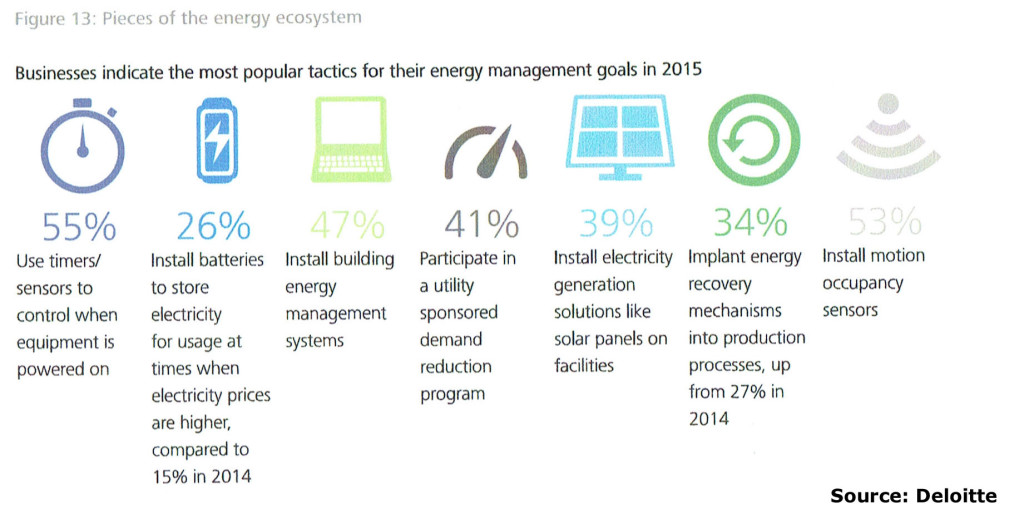The U.S. commercial sector spent just under $146 billion on electricity in 20141, and that has prompted business leaders across the country to sit up and take notice.
In a fascinating study released late last month, Deloitte’s Center for Energy Solutions reported that 79 percent of the businesses it surveyed viewed cutting their electricity expenditures as “essential to creating and maintaining competitive advantage.” To this end, the survey (which is available here) found that 57 percent of the businesses surveyed have formal energy reduction goals—up significantly from the 46 percent that said they had such goals the year before.
This transition is occurring even though electricity prices are relatively low currently, and businesses do not expect substantial increases in the near term. In other words, energy management is quickly moving from the realm of reactive cost cutting to active planning and forward thinking: what can we do as a business to curb our energy consumption and improve our competitiveness?
The answers to that question may surprise you. Conventional measures such as sensors to raise/lower heating and cooling controls are still the go-to choice. But increasingly, Deloitte said, businesses are forging a path of their own, pushing ahead with options such as in-house batteries and onsite generation. Specifically, 39 percent reported installing some form of onsite generation (solar panels or other options) during the year, up from 31 percent in the previous year. Similarly, 26 percent said they installed batteries during the year compared to just 15 percent in 2014. In addition, 34 percent reported installing recovery equipment to capture previously lost energy used in production and other processes.
The moral of the story? Companies are increasingly concerned about their energy costs and looking for ways, both conventional and not so, to reduce their usage and boost their competitiveness. The question is, who is going to step up supply those needs?
Continue reading Utilities Risk Losing
Commercial Customers
Without New Approach

 Follow
Follow